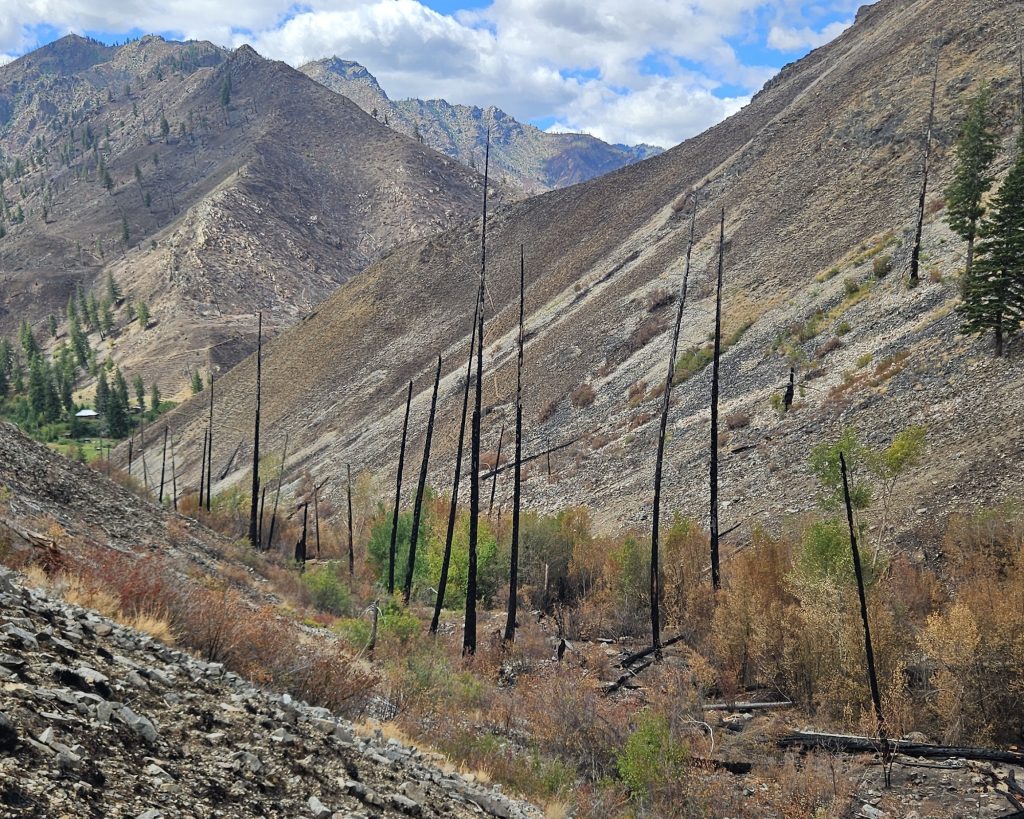How can Wildfire Management Promote Fire Mosaics in Riparian Forests and Increase Stream Ecosystem Resiliency?

- Lisa Eby, University of Montana, lisa.eby@mso.umt.edu
- Jeremy Brooks , University of Montana, jeremy.brooks@umontana.edu
Principal Investigator
Researcher
Ecologists have long understood that when wildfires patchily burn a landscape (i.e., into a mosaic) with varying severity, fire can promote resilient ecosystems. However, a warmer and drier climate, compounded by historical fire suppression in the northwestern US, is leading to more uniform and severe fires. While the consequences for upland forests have been the focus of past research, Jeremy and his collaborators are asking, what are the consequences for riparian plants — plants like willows and alders that grow along the edges of streams — as well as streams themselves? When the forest canopy is removed, fires may have negative effects on streams. Without the forest as a buffer, rains can flush sediment into streams that suffocate fish eggs, or greater exposure to the sun can raise temperatures to lethal levels for fish. On the other hand, fires can have positive effects on streams. Greater exposure to the sun can also lead to higher algae growth that in turn fuels aquatic insects, fish, and even birds and bats. These negative and positive effects can vary over time, even decades after wildfire, yet most studies consider only a few years post-fire. It is unclear whether fires that burn in a mosaic might lead to a combination of positive and negative outcomes for stream-riparian ecosystems. Further, those outcomes might vary throughout decades after a fire. Exploring these unknowns can provide insight into whether promoting a mosaic of riparian forests through fire and fuels management leads to more resilient stream-riparian ecosystems.
To explore these questions, Jeremy and his collaborators from the Montana and Idaho Departments of Environmental Quality, the Western Montana Conservation Commission, the US Geological Survey, and the US Forest Service, are developing a tool for managers. This tool will predict riparian plant regrowth after wildfire and evaluate how variation in that regrowth affects the trajectory of stream-riparian ecosystems over decades. They are leveraging long-term studies of stream-riparian responses to fire that have occurred in the Bitterroot National Forest (led by the University of Montana) and The Frank Church Wilderness (led by Idaho State University). The research team will combine the data from these long-term studies with data collected from satellite imagery to describe the drivers of riparian plant regrowth after wildfire. Based on what they learn about how vegetation may respond to fire in small-scale stream-riparian ecosystems, they can infer how vegetation may respond across entire watersheds, including ones outside of the study area. This tool can help guide fuels and fire managers in the northwestern US to take actions that support management goals of the state and federal agencies that Jeremy is working with. This diverse group can use the tool they develop to address management goals like preventing post-fire riparian plant shifts, conserving freshwater refugia for native fish, and enhancing the resiliency of sensitive stream and riparian habitats.
